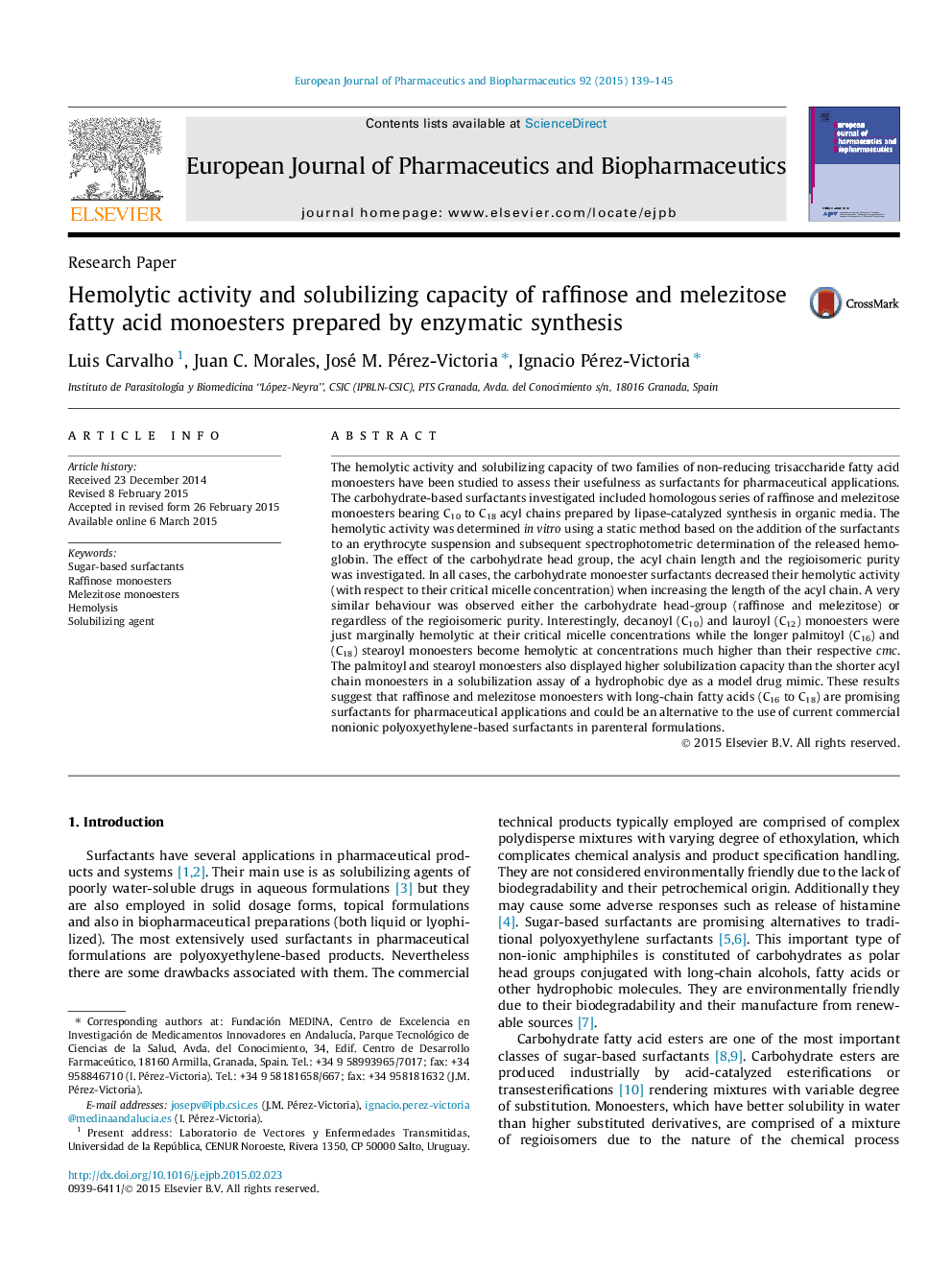| Article ID | Journal | Published Year | Pages | File Type |
|---|---|---|---|---|
| 2083346 | European Journal of Pharmaceutics and Biopharmaceutics | 2015 | 7 Pages |
•Raffinose and melezitose fatty acid monoesters are potential surfactants.•These sugar-based surfactants may solubilize hydrophobic drugs.•C16 and C18 monoesters reach hemolysis well above their respective cmc.•C16 and C18 monoesters are promising surfactants for parenteral formulations.
The hemolytic activity and solubilizing capacity of two families of non-reducing trisaccharide fatty acid monoesters have been studied to assess their usefulness as surfactants for pharmaceutical applications. The carbohydrate-based surfactants investigated included homologous series of raffinose and melezitose monoesters bearing C10 to C18 acyl chains prepared by lipase-catalyzed synthesis in organic media. The hemolytic activity was determined in vitro using a static method based on the addition of the surfactants to an erythrocyte suspension and subsequent spectrophotometric determination of the released hemoglobin. The effect of the carbohydrate head group, the acyl chain length and the regioisomeric purity was investigated. In all cases, the carbohydrate monoester surfactants decreased their hemolytic activity (with respect to their critical micelle concentration) when increasing the length of the acyl chain. A very similar behaviour was observed either the carbohydrate head-group (raffinose and melezitose) or regardless of the regioisomeric purity. Interestingly, decanoyl (C10) and lauroyl (C12) monoesters were just marginally hemolytic at their critical micelle concentrations while the longer palmitoyl (C16) and (C18) stearoyl monoesters become hemolytic at concentrations much higher than their respective cmc. The palmitoyl and stearoyl monoesters also displayed higher solubilization capacity than the shorter acyl chain monoesters in a solubilization assay of a hydrophobic dye as a model drug mimic. These results suggest that raffinose and melezitose monoesters with long-chain fatty acids (C16 to C18) are promising surfactants for pharmaceutical applications and could be an alternative to the use of current commercial nonionic polyoxyethylene-based surfactants in parenteral formulations.
Graphical abstractFigure optionsDownload full-size imageDownload high-quality image (199 K)Download as PowerPoint slide
